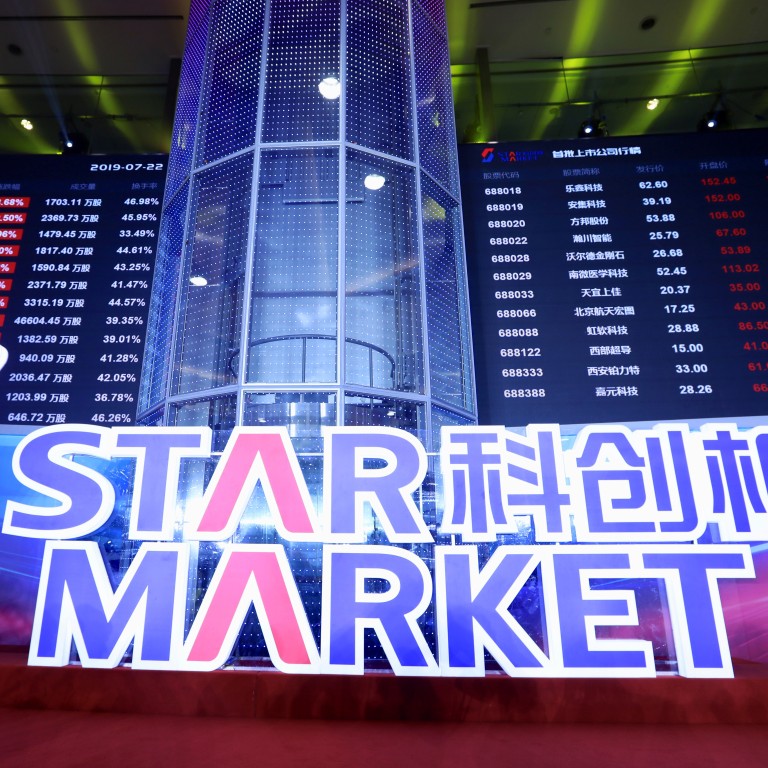
Nasdaq-style Star Market must show it is more than a casino
- For the new bourse to be successful, it needs to prove that it is truly market-driven and able to attract big-ticket unicorns
The euphoria did not last long. The much-advertised new Star Market of the Shanghai Stock Exchange opened to a stellar start with all 25 new shares soaring by an average of 140 per cent. By the second day, all but four of the new listings in China’s latest answer to America’s Nasdaq fell as investors took flight. The volatility looks set to continue for a while.
Collectively, the two dozen firms raised 37 billion yuan (US$5.4 billion). The trillion-dollar question on everyone’s minds is: Will the Science and Technology Innovation Board become another casino for China’s predominantly retail investors, or help viable new hi-tech unicorns raise funds and realise their true value? The timing is more auspicious than the launch of its cousin, ChiNext, a decade ago in Shenzhen. That was in the midst of the global financial crisis, and its total valuation is still 60 per cent off its peak in 2015.
Policymakers want it to be different this time. The ongoing trade war with the United States means many Chinese start-ups will prefer to raise capital onshore than try to list in a country that has been openly hostile to China’s technological rise.
Is China’s tech board just another ‘casino’ for excitable punters?
Star Market was effectively created on the order of President Xi Jinping in November. It aims to provide a freer market mechanism to fund technological innovation rather than infrastructure projects. To discourage inexperienced retail investors, trading on the new market is restricted to players with at least two years of experience and 500,000 yuan in available funds. But the thresholds may be too low to make a difference. More than 140 firms in technology and science have applied for listing, which could collectively raise 128.8 billion yuan. If successful, that will certainly give Hong Kong’s stock exchange a run for its money. Since last year, the city has revamped its listing rules in a bid to attract mainland Chinese firms. The loosening of rules includes allowing companies with dual-class share structures and unprofitable biotechnology start-ups to go public. Dual-class structures allow existing owners or founders to retain their control of the company even if they only own a minority of shares after listing.
Star Market will be the first exchange in China to allow unprofitable technology companies, not just biotech start-ups, to list. A new IPO system means companies are required to disclose their earnings and operations in their listing applications. But regulators will let the market decide their valuations once their applications have been cleared. Beijing has long wanted to woo back national champions such as Alibaba Group (which owns the South China Morning Post), Tencent and Xiaomi to list onshore. To avoid fizzling out like ChiNext did, Star Market needs to prove that it is truly market-driven and able to attract big-ticket unicorns.

